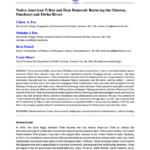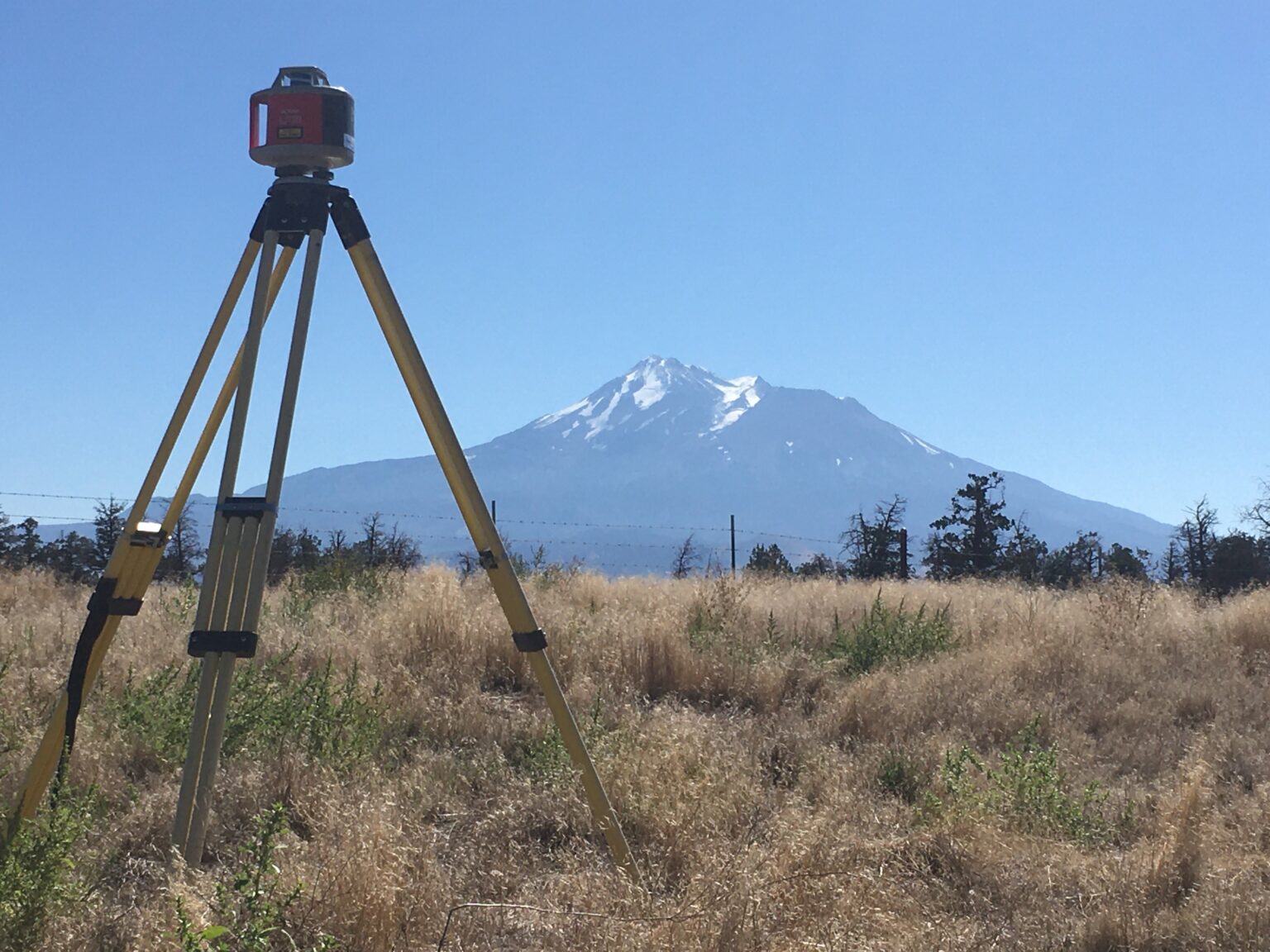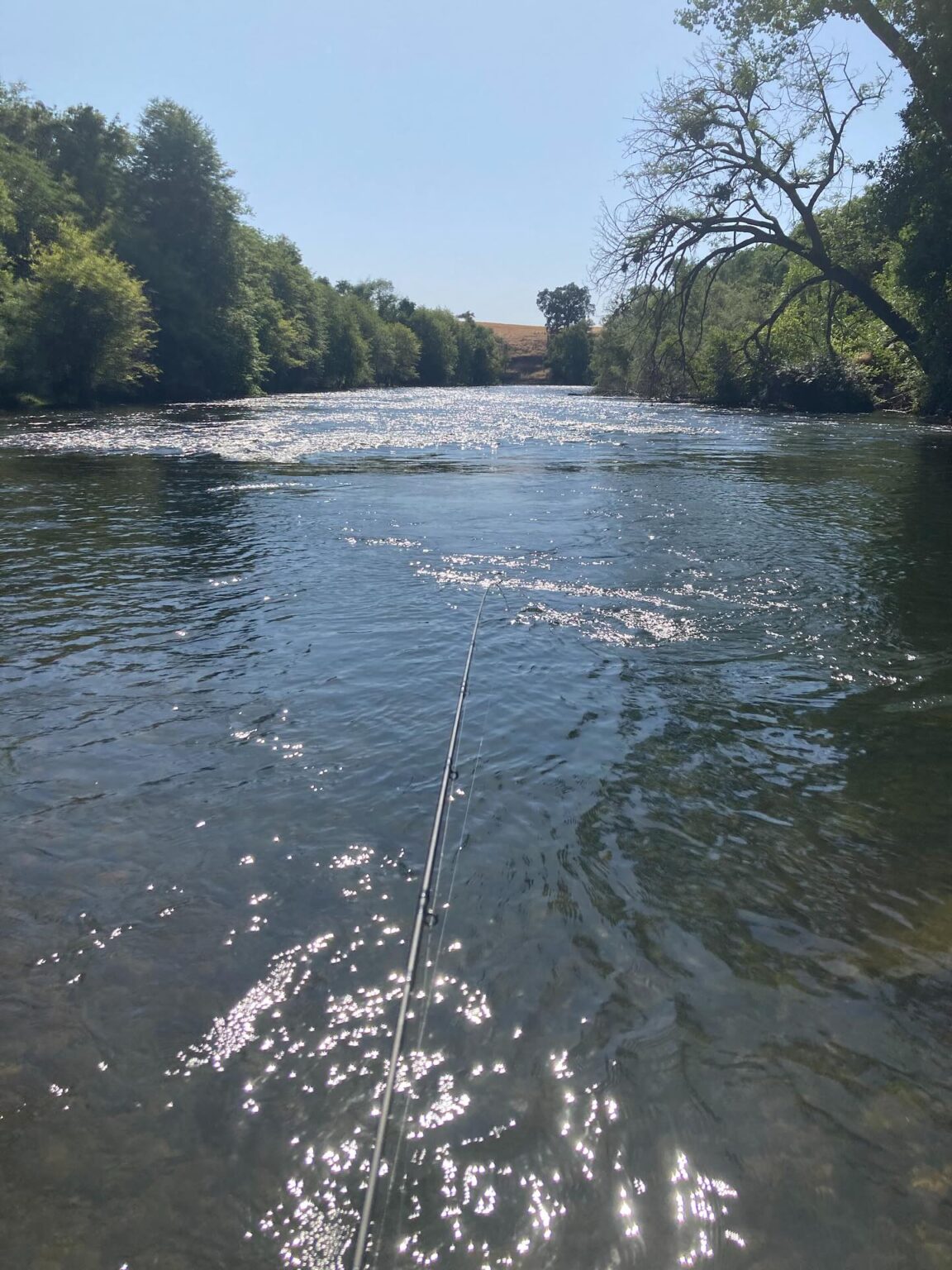PPL Veazie Hydro Station P-2403
General information | |
| Waterway |
Penobscot River |
| Current status | Removed |
| Type of facility | Conventional Hydro |
| Mode of hydropower generation | Run-of-river |
| Type of permit | FERC License |
| Year built | 1913 (dams on site since 1830s) |
| Year retired | 2008 |
| Year removed | 2013 |
FERC information | |
| FERC docket # | P-2403 |
| FERC project name | Veazie |
Ownership and operation | |
| Owner | PPL Corporation |
| Owner type | Private Non-utility |
| Transmission or distribution system owner | Bangor Hydro-Electric Co |
Through the removal of the Great Works (2012) and Veazie (2013) dams, along with installation of a fish bypass at Howland Dam (2016) on the Penobscot River in Maine, Atlantic salmon and other sea-run fish now have access to nearly 2,000 miles of spawning and rearing habitat. The Penobscot River Restoration Project has allowed the river to return to a more natural state and renewed the sense of pride in communities who use the river.
The Story
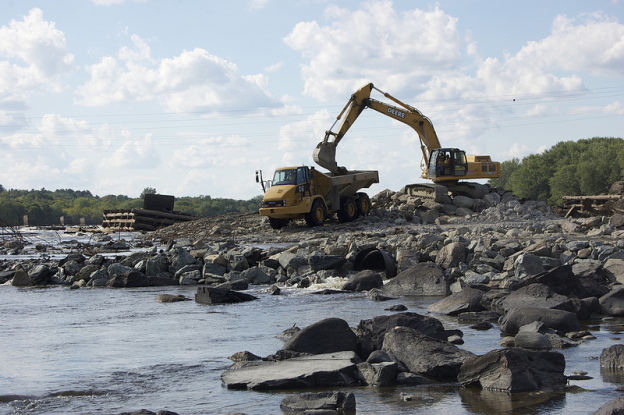
Great Works Dam | Photo by Penobscot River Restoration Trust
The Penobscot River is the largest river in Maine, weaving through thousands of miles of beautiful landscape from its headwaters in north-central Maine down to the Penobscot Bay in the Gulf of Maine. This large-scale restoration project on the Penobscot was initiated in 1999 when Pennsylvania Power and Light (PPL) Corporation purchased all nine dams on the Penobscot and put into action what former Maine Governor and U.S. Congressman John Baldacci stated, “[was] one of the largest, most creative river restoration projects in our nation’s history.” In 2004, the Penobscot Indian Nation, U.S. Department of Interior, state of Maine, PPL, American Rivers and many others, came together to form the Penobscot River Restoration Trust and signed an agreement to reconnect nearly 2,000 miles of habitat for the benefit of fish, wildlife, tribes and local communities.
This project aimed to provide the economic benefits of hydropower production while providing access to historic spawning habitat for migratory fish, such as endangered Atlantic salmon and shortnose sturgeon, threatened Atlantic sturgeon and other species. The project involved:
- Removal of Veazie and Great Works dams
- Decommissioning Howland Dam and building a fish bypass around it
- Improved fish passage at four other dam sites
- Improved hydropower production at six other dam sites
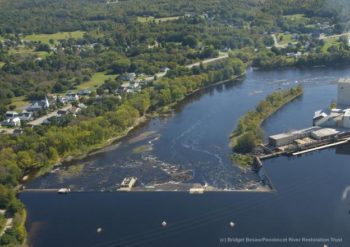
Great Works Dam | Photo by Bridget Besaw, Penobscot River Restoration Trust
Prior to the implementation of the project, native fish populations in the Penobscot were reaching newly recorded lows. The population of Atlantic salmon was dwindling in what was once considered the greatest run of this species in the country, and American shad, once found in abundant numbers in the Penobscot’s lakes, ponds and tributaries, no longer made the journey up the river. The decline of these and other native fish populations impacted river otters, osprey, bald eagles and other wildlife dependent on a healthy, functioning river.
Furthermore, the Penobscot Indian Nation historically relied on Atlantic salmon as their main food source. However, beginning with the construction of the first dam in the 1830s, the Tribe noticed a consistent annual decrease in the number of salmon migrating up the river to spawn each year. As a result, tribal fishing as a way of life was lost. This project allowed for a revitalization of the Penobscot Nation’s fishing heritage.
In June 2016, the final steps of the project were completed. Through the dedication of project partners in this innovative collaboration, wildlife has been given an opportunity to once again flourish in the Penobscot River Basin and beyond.
Dam Removal Benefits
- Increased Atlantic salmon populations; access to critical habitat may help bring this endangered species back from the precipice of extinction
- Increased populations of striped bass, alewife, blueback herring, smallmouth bass, American eel, rainbow smelt, tomcod and endangered shortnose sturgeon in the Penobscot
- American shad, which had completely vacated the river prior to restoration, have now rebounded to up to two million individuals in a spawning season
- Eagles, osprey, kingfisher and migratory songbirds frequently spotted soaring high in the sky, snatching up fish from the water’s surface, or perching along the banks of the river
- Small marine-dwelling creatures like lobsters and mussels, and even larger mammals such as whales and seals, are making a home in the newly restored habitat beyond the mouth of the Penobscot
- Increased marine biodiversity has led to an increase in a number of economically important species of marine fish, such as tuna and cod
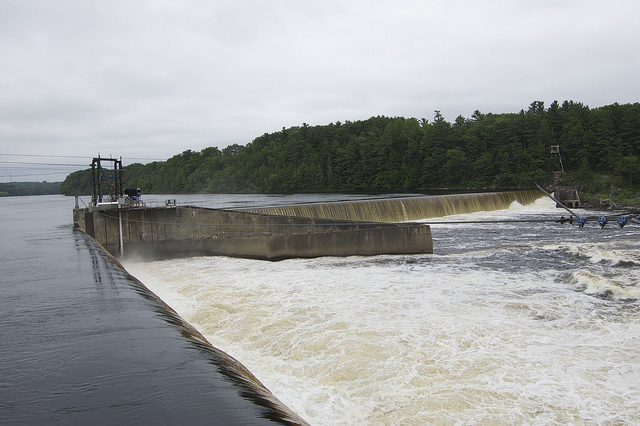
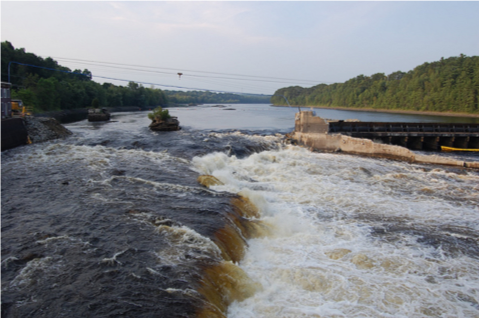
The Veazie Dam prior to destruction (top) was a barrier to many species of fish to returning to historical spawning sites further up the river. With the removal of the damn (bottom) has enhanced the number fish now found within the Penobscot River.
The Penobscot Indian Nation has celebrated the return of the Atlantic salmon to stretches far upstream, and they are able to practice traditions that for many years were hampered by the concrete walls that once rose up from the river’s bed. Boaters, fishermen, swimmers and others within the local community can now recreate in the lower Penobscot without fear of the safety hazards that the dams once presented. At the same time, hydropower production has increased by approximately 29,000 megawatt hours. The Penobscot Restoration Project provides an example of how collaboration, tradition and an invested sense of pride in natural resources can turn into a successful story of people and nature working together.
Learn more at www.americanrivers.org/penobscot-river-dams.
Is there something you’d like to add or correct? Please let us know.
Related posts
- From Appalachian Mountain Club 11/27/23
Wild Atlantic Salmon Recovery in Maine: The “King of Fish” Makes a Comeback - From Trout Unlimited 05/26/22
The next half-century of hydro - From Trout Unlimited 01/20/22
In Maine, fish following ancient instincts find newly open rivers - From Idaho Rivers United 11/17/21
What happens to fish populations when dams are removed? - From Trout Unlimited 06/14/16
The Penobscot is Open!
News and updates
From California Sportfishing Protection Alliance11/1/2025
Measuring Flow to Support New Interim Flow Requirements in the Shasta River
From California Sportfishing Protection Alliance11/1/2025


